This Korean Gochujang Tofu is baked until crispy perfection and coated in a sweet and spicy gochujang sauce. It's easy to make and a perfect high-protein weeknight dinner!

After posting many tofu recipes on the blog, I am considering myself an expert in the field. From Eggplant Tofu to Tofu Fajitas, to Teriyaki Tofu, it's safe to say that I've cracked the code to making tofu taste good.
This Gochujang Tofu will be your new favorite recipe to make at home! It's delicious served alongside white or brown rice, and steamed vegetables.
Jump to:
What is Gochujang?
Gochujang is a fermented Korean red chili paste that is an essential ingredient in Korean cuisine. It's made with chilies, fermented soybeans, glutinous rice, and salt.
Gochujang is spicy, salty, earthy, and sweet. It has a thick and sticky texture and is most often used in Korean dishes to make marinades for meat and sauces. Its most popular uses are in dishes like kimchi jjigae and tteokbokki.
Where Can I Buy Gochujang?
Nowadays, you can find it in the Asian section of most big grocery stores. If not, you can always find it in your local Asian market, as well as in all Korean markets.
You can also order gochujang on Amazon, or other online stores.
Ingredients and Notes
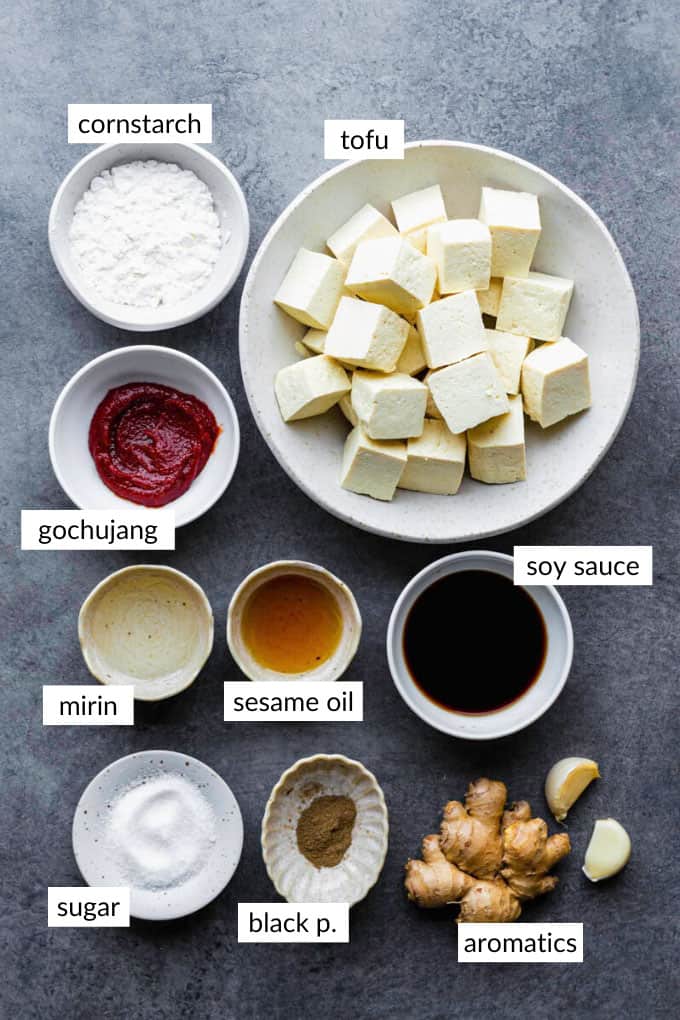
- Tofu: Make sure to use extra-firm tofu to achieve the best texture. Soft tofu or silken tofu won't work, because they fall apart easily.
- Cornstarch: You'll need it both for coating the tofu and for thickening the sauce.
- Gochujang paste: This is an essential ingredient in making this gochujang tofu. As mentioned above, this is a fermented Korean chili paste that has a unique flavor. You can find it in most Asian markets.
- Mirin: It's a rice wine that is sweet and a little tangy. It adds a bold umami flavor and makes the sauce shiny.
- Sesame oil: Just 1-2 teaspoons of toasted sesame oil gives this recipe an amazing nutty flavor, which makes it taste more like authentic Korean cooking.
- Soy sauce: You'll notice that there isn't much salt in this recipe, because all of the saltiness comes from the soy sauce.
- Sugar: To balance out the spiciness of the gochujang paste. You can use granulated sugar, brown sugar, or cane sugar.
- Black pepper: A little bit to taste.
- Aromatics: Make sure to use fresh garlic and fresh ginger for the best results.
- For garnish (optional): I like to add toasted sesame seeds and chopped green onions.
See the recipe card below for exact measurements.
How to Make Gochujang Tofu
- Pre-heat oven to 430ºF (220ºC). Cut tofu into 1-inch cubes and add into a shallow bowl. Add soy sauce, a pinch of salt, and black pepper. Toss until well coated. Add the cornstarch and toss until well-coated on all sides.
- Add the tofu cubes to a baking sheet and brush with sesame oil on one side, then flip (with the greased side down), and brush the other side with oil. Bake for 30-35 minutes, flipping halfway through, until golden brown.


3. In the meantime, make the spicy sauce. To a small bowl add all of the sauce ingredients- gochujang, soy sauce, sugar, mirin, sesame oil, minced garlic and ginger, cornstarch, and water. Using a whisk, mix until the cornstarch has dissolved and the sauce is smooth.
4. Add the sauce to a large skillet and heat over medium heat. Bring to a gentle simmer, then cook for 2-3 minutes, stirring often, or until the sauce has thickened, but is still pourable. Remove from the heat and set aside to cool.


6. Once ready, add the crispy tofu to the pan with the cooled gochujang sauce and stir to cover on all sides.
Serve this gochujang tofu immediately with toasted sesame seeds and green onions!
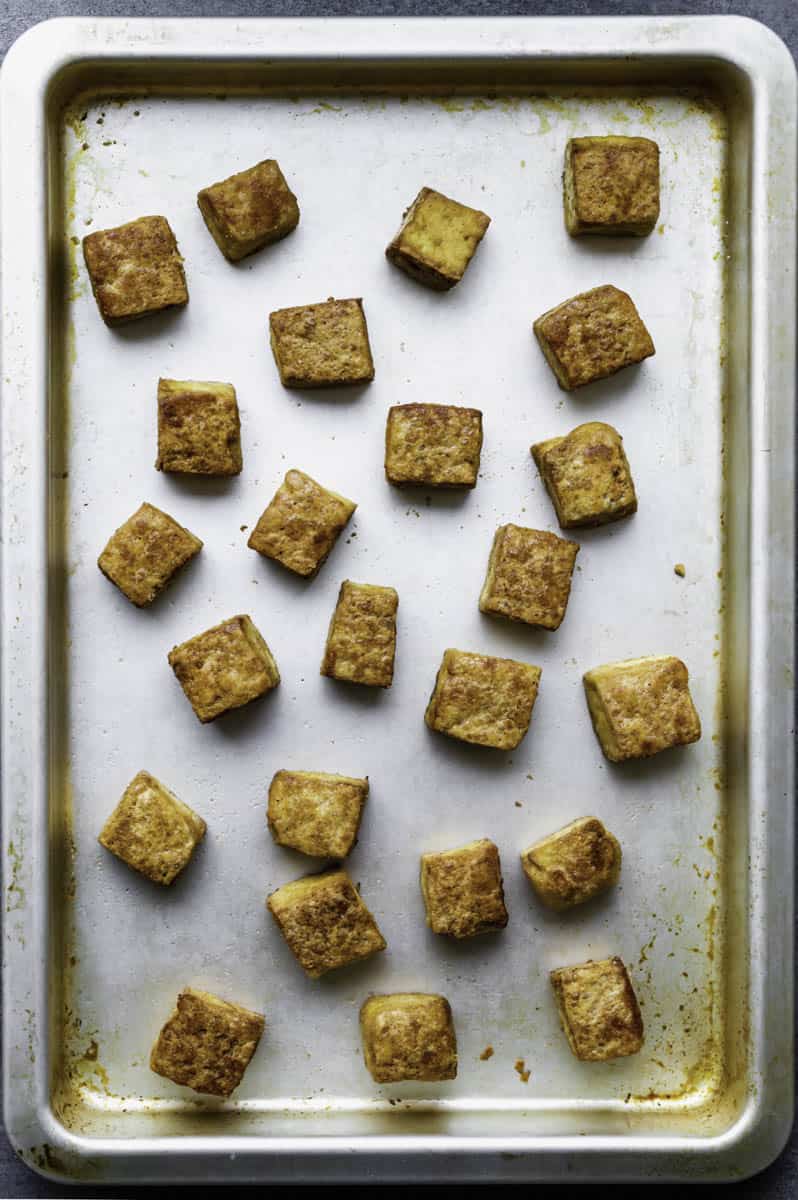

Expert Tips
- Use extra-firm tofu. To get the tofu golden brown and crispy, you need to use firm, extra-firm, or super-firm tofu. Soft or silken tofu won't work, because they fall apart easily.
- Press the tofu. It's another important step that helps the tofu crisp up in the oven. Pressing for 30 minutes to 1 hour gets rid of the excess water and allows the tofu to absorb more flavor. You can do that either using a tofu press or wrapping the tofu in paper towels and placing something heavy on top (I like to use my Dutch oven).
- Don't thicken the sauce too much. You want the sauce to still be pourable to coat every piece. If the sauce is too thick it will be hard to coat all sides of the tofu.
- Let the sauce cool before you toss the tofu in. In testing this recipe I've found that adding the sauce hot to the tofu makes it lose its crispiness and become soggy, so make sure to let it cool to room temperature.
- Serve right away! This gochujang tofu is best served right after it's tossed with the sauce, while it's still warm and crispy.
FAQ
Yes. As mentioned at the beginning of the post, gochujang is made entirely of plant-based ingredients such as chilies, fermented soybeans, glutinous rice, and salt.
Yes, you can make certain things ahead of time. You can make the sauce, and press, cut, and coat the tofu with the cornstarch and seasoning. I don't recommend baking the tofu ahead of time, because it loses its crispiness as it cools.
Yes, this gochujang tofu is moderately spicy, but you can adjust the spice level. If you want to make it less spicy, you can substitute ½ tablespoon of the gochujang paste with ½ tablespoon of tomato paste. And if you want to make it spicier, add 1 more tablespoon of gochujang paste.
No. Freezing changes the texture of the tofu and can often make it soggy, so I don't recommend it.
Although it's an essential ingredient, you can substitute it with double concentrate tomato paste and ¼ teaspoon of red pepper flakes.
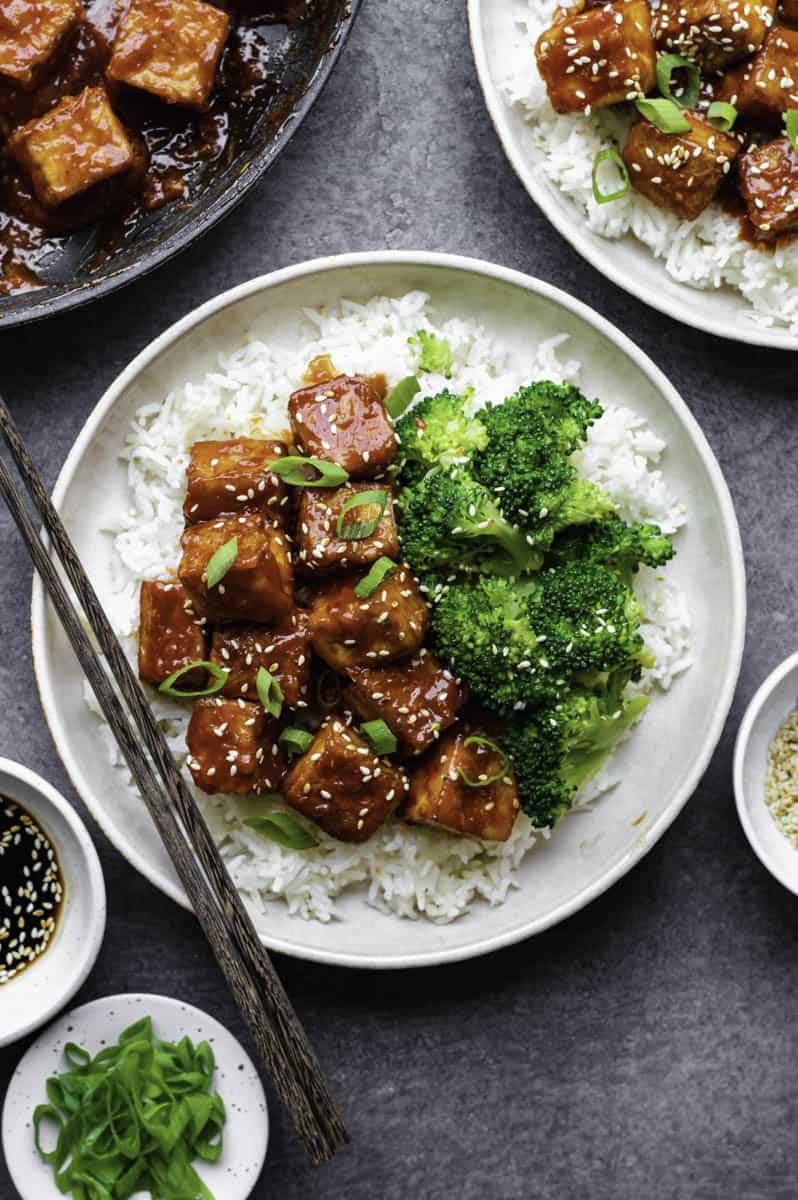
Variations
- Make it less spicy: If you're sensitive to heat, you can use ½ tablespoon tomato paste and ½ tablespoon gochujang paste.
- Make it refined sugar-free: Instead of granulated sugar, you can use maple syrup or honey if you're not vegan.
- Make it gluten-free: Use gluten-free soy sauce a.k.a tamari. Everything else is gluten-free.
- Without cornstarch: If you don't have it on hand or don't want to use it in general, you can substitute it with the same amount of arrowroot starch or potato starch.
- Without miring: You can substitute it with half of the amount of rice vinegar and a little bit more sugar to taste.
- Fry the tofu: If you want to take this recipe to the next level, I highly recommend deep-frying the tofu in vegetable oil. It makes it so crunchy and flavorful.
Serving
This spicy tofu is great for making rice bowls with cooked rice and steamed vegetables. I like to make a double batch of the sauce so I can have some leftovers for drizzling over the rice.
It also pairs perfectly with dishes like Gochuchang pasta, Kimchi Jjigae, and Kimchi Alfredo Pasta.

Storage and Reheating
Let gochujang tofu cool to room temperature. Then, transfer it to an airtight container and store it in the fridge for 3-4 days.
To reheat, add leftovers to a skillet with a splash of water. Heat over medium heat, stirring occasionally, or until warmed through. You can also reheat it in the microwave for 1-2 minutes.
More Tofu Recipes
📖 Recipe
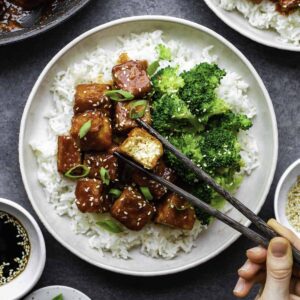
Korean Gochujang Tofu
Equipment
- Oven
Ingredients
Crispy tofu
- 2 (8oz) blocks extra-firm tofu pressed*
- 1 tablespoon soy sauce (use tamari if GF)
- 2-3 tablespoon cornstarch
- ⅛ teaspoon Freshly cracked black pepper
- A healthy pinch of salt
- toasted sesame oil for brushing
Gochujang sauce
- 1 ½ tablespoon gochujang paste
- 1 tablespoon soy sauce (use tamari if GF)
- 2 tablespoon granulated sugar
- 2 tablespoon mirin
- 2-3 cloves of garlic, minced
- 1 teaspoon minced ginger
- 1 tablespoon cornstarch
- ¼ cup cold water
- 1 teaspoon toasted sesame oil
Instructions
- Pre-heat oven to 430ºF (220ºC). Cut tofu into 1-inch cubes and add into a shallow bowl. Add soy sauce, a pinch of salt, and black pepper. Toss until well coated. Add the cornstarch and toss until well-coated on all sides.2 (8oz) blocks extra-firm tofu, 1 tablespoon soy sauce, ⅛ teaspoon Freshly cracked black pepper, A healthy pinch of salt, 2-3 tablespoon cornstarch
- Add the tofu cubes to a baking sheet and brush with sesame oil on one side, then flip (with the greased side down), and brush the other side with oil. Bake for 30-35 minutes, flipping halfway through, until golden brown.toasted sesame oil
- In the meantime, make the spicy sauce. To a small bowl add all of the sauce ingredients- gochujang, soy sauce, sugar, mirin, sesame oil, minced garlic and ginger, cornstarch, and water. Using a whisk, mix until the cornstarch has dissolved and the sauce is smooth.1 ½ tablespoon gochujang paste, 1 tablespoon soy sauce, 2 tablespoon granulated sugar, 2 tablespoon mirin, 2-3 cloves of garlic, minced, 1 teaspoon minced ginger, 1 tablespoon cornstarch, ¼ cup cold water, 1 teaspoon toasted sesame oil
- Add the sauce to a large skillet and heat over medium heat. Bring to a gentle simmer, then cook for 2-3 minutes, stirring often, or until the sauce has thickened, but is still pourable. Remove from the heat and set aside to cool.
- Once ready, add the crispy tofu to the pan with the cooled gochujang sauce and stir to cover on all sides.
- Serve this gochujang tofu immediately with toasted sesame seeds and green onions!
Notes
- Use extra-firm tofu. In order to get the tofu golden brown and crispy, you need to use firm, extra-firm, or super-firm tofu. Soft tofu or silken tofu won't work, because they fall apart easily.
- Press the tofu. This is another important step that helps the tofu crisp up in the oven. Pressing for 30 minutes to 1 hour gets rid of the excess water and allows the tofu to absorb more flavor. You can do that either using a tofu press or wrapping the tofu in paper towels and placing something heavy on top (I like to use my Dutch oven).
- Don't thicken the sauce too much. You want the sauce to still be pourable in order to coat every piece. If the sauce is too thick it will be hard to coat all sides of the tofu.
- Let the sauce cool before you toss the tofu in. In testing this recipe I've found that adding the sauce hot to the tofu makes it lose its crispiness and become soggy, so make sure to let it cool to room temperature.
Nutrition
Nutrition information is a rough estimate calculated with third-party calculations without including the optional ingredients.
Food safety
- Cook to a minimum temperature of 165 °F (74 °C)
- Do not use the same utensils on cooked food, that previously touched raw meat
- Wash hands after touching raw meat
- Don't leave food sitting out at room temperature for extended periods
- Never leave cooking food unattended
- Use oils with a high smoking point to avoid harmful compounds
- Always have good ventilation when using a gas stove


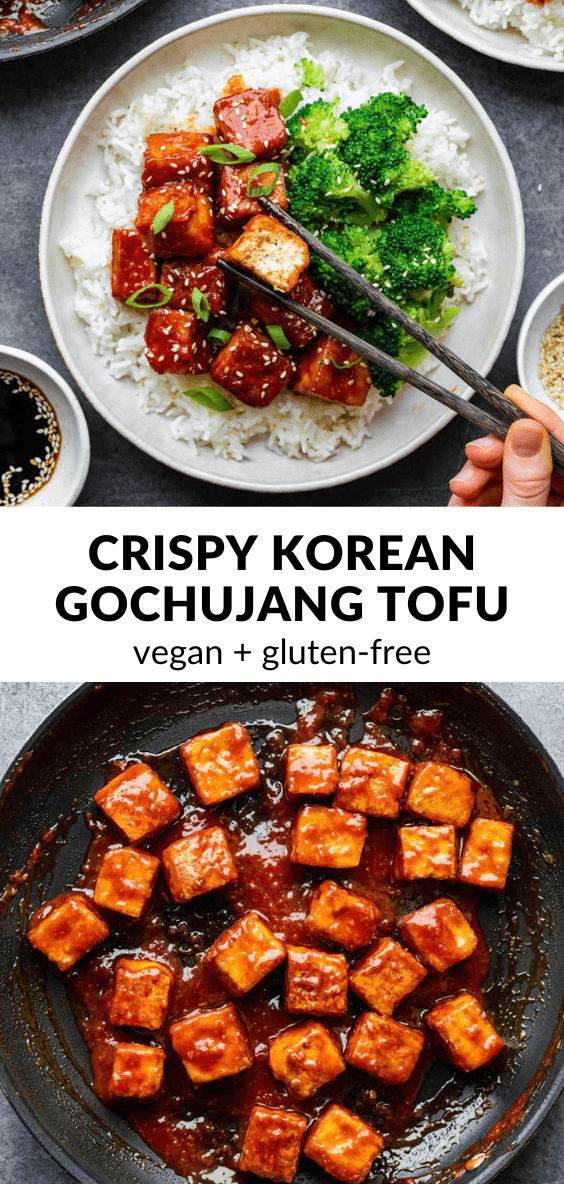
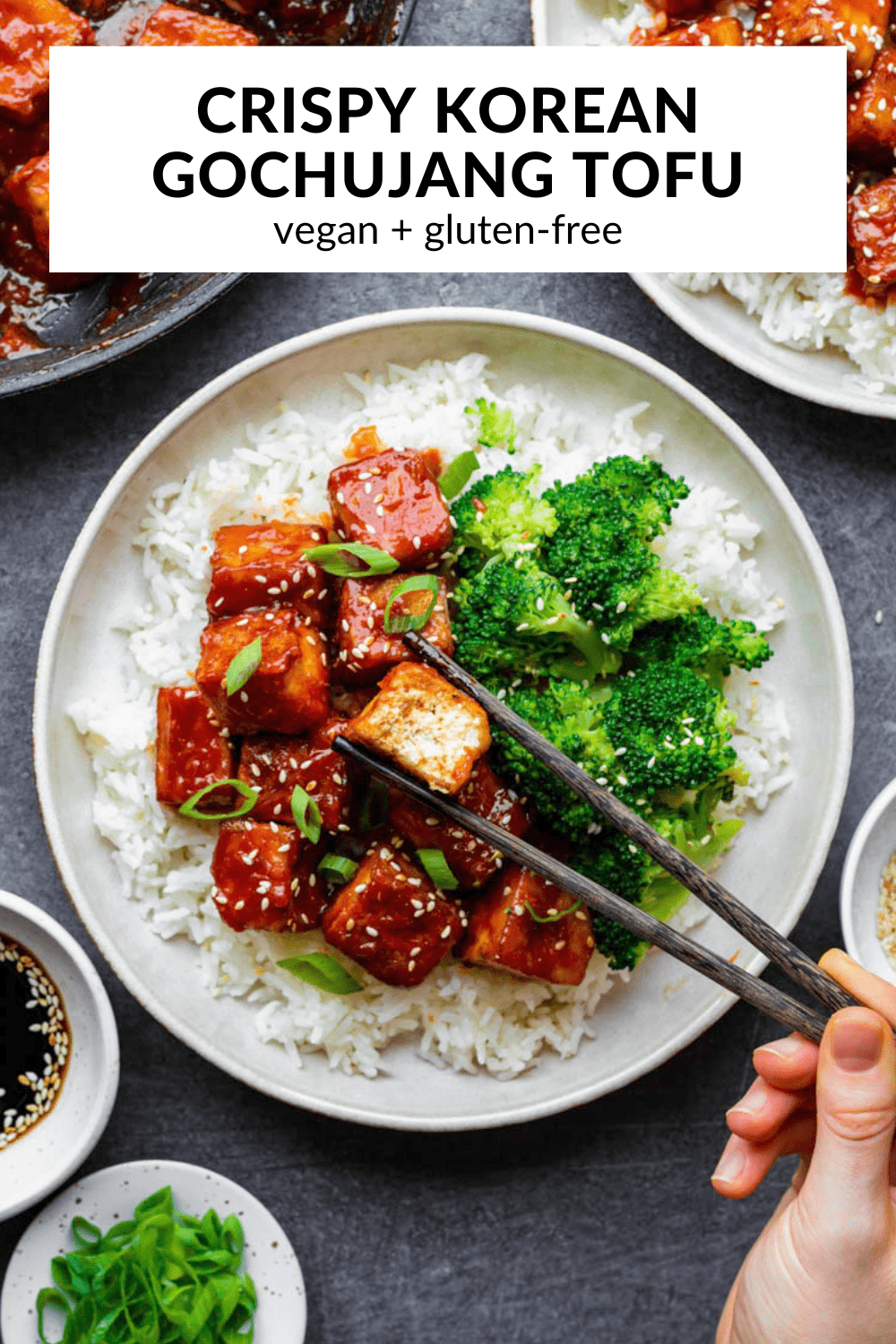
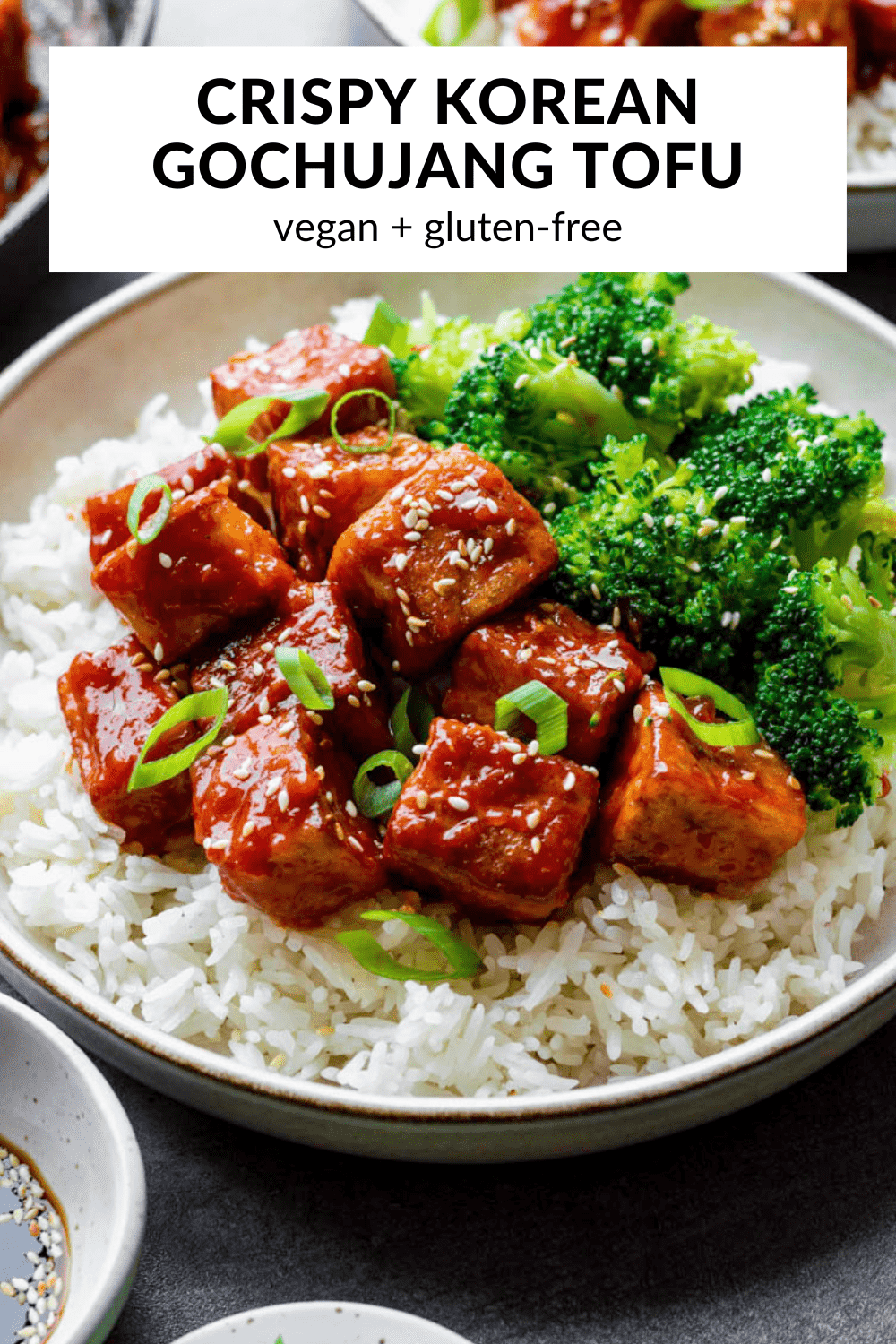
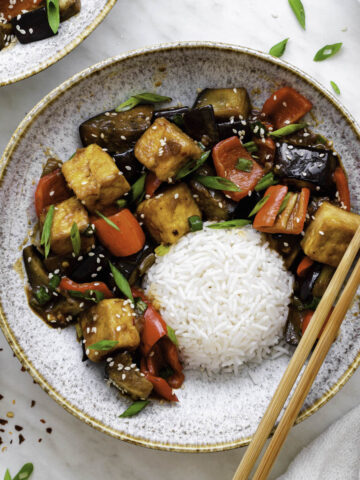

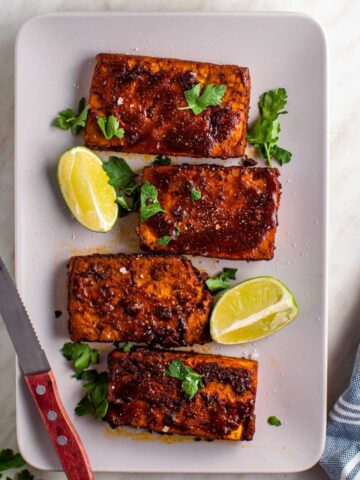





Joe Curtis says
GREAT RECIPE!
Petranka says
thank you!